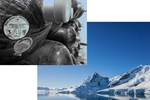Hexagon Digital Wave’s proprietary MAE technology is approved for use in Canada
Modal acoustic emission (MAE) has been identified as the most effective method for use in pressure vessel service life requalification in firefighting applications.
Share
Read Next

Photo Credit: Hexagon Digital Wave
In June 2022, Hexagon Digital Wave (Centennial, Colo., U.S.) a business of Hexagon Composites (Alesund, Norway), received an equivalency certificate from Transport Canada (TC) authorizing the use of its modal acoustic emission (MAE) technology in continued service life requalification of cylinders used in firefighting applications. This equivalency certificate represents entry into Canada, a new market for Hexagon Digital Wave. The company is known for its Type IV cylinder requalification capabilities (see “Hexagon Digital Wave requalifies Type IV cylinders for RNG/CNG transportation module OEM”).
Cylinders typically have an initial service life of 15 years. In order to remain in service for a maximum service life of 30 years, they need to be requalified once every five years using the MAE requalification process, according to the company.
“MAE provides first responders with the confidence in knowing their cylinders have been requalified with the safest TC and Department of Transport [DOT] approved technology. By continuing the service life of cylinders, fire departments can refocus their time, energy and budgets on other key functions of firefighting that need continual attention,” Melissa Holler, president, Hexagon Digital Wave, says. “Continued service life requalification of the cylinders is the first advancement in technology brought to the North American Fire Service that doesn’t come with a significant cost attached.“
The certification is the direct result of a joint research project between TC and Hexagon Digital Wave that took place in 2020 to evaluate end-of-life (EOL) performance and requalification methods for TC-3CCM cylinders used in firefighting applications. Cylinders approaching 15 years of service life were collected from Canadian fire departments to be part of the study to evaluate EOL burst strength, ambient cycle life, notch tolerance, impact tolerance, environmental exposure and improvement of liner fatigue life. Furthermore, the study evaluated the efficacy of three potential requalification methods — hydrostatic testing, MAE and feature based acoustic emission — for TC-3CCM cylinders.
The study concluded that all cylinders, tested at or approaching the end of their service life, possessed:
- Residual burst strength greater than that required at time of manufacture.
- Residual cycle life compared to an additional 15 years of service.
- Acceptable notch and impact tolerance.
- Residual cycle life with respect to extreme temperature environmental cycling.
Ultimately, the study found MAE to be the most effective method relative to identifying structurally compromised cylinders.
With the issuance of this TC-SU 13583 certification, TC becomes the second regulatory agency authority with high-pressure compressed gas cylinder oversight to acknowledge and approve the benefits and safety provided by MAE.











.jpg;maxWidth=300;quality=90)



